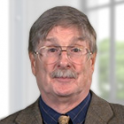Playlist
Show Playlist
Hide Playlist
Inflammation and Parenchymal Regeneration
-
Slides Acute and Chronic Inflammation Regenerate Parenchyma.pdf
-
Reference List Pathology.pdf
-
Download Lecture Overview
00:01 Welcome. 00:02 We're going to continue the process of healing the injury. 00:06 And when all goes well, and according to plan, we will completely regenerate the parenchyma. 00:13 It's almost always doesn't happen perfectly, as we'll talk about. 00:18 But that would be the ideal circumstance. 00:21 So we'll cover this one first. 00:23 Here we are, in our roadmap, we've talked about moderating the mediators and acute inflammation initially. 00:31 We've talked about recruiting and activated macrophages. 00:34 And now we're going to try to regenerate parenchyma. 00:37 If we don't do that, we're gonna see the boxes on the bottom. 00:41 But right now we're going to try to regenerate parenchyma. 00:45 Every healing process is a combination of these two. 00:50 So just important that you keep this in mind, big picture. 00:53 Healing is somewhere on the spectrum between perfect regeneration and complete scarring. 00:59 And most healing is going to be some combination of the two. 01:04 Right now we're going to focus on regeneration. 01:07 Here's where we are in terms of our overlapping peaks of activity. 01:12 We've had some initial injury, at times zero. 01:14 We have the vascular response of edema. 01:17 We've had the acute neutrophilic infiltrate that peaked at about one to two days. 01:21 And we are at the peak of the macrophage recruitment, which is like three to five days. 01:28 And at that point, we are starting to do the regenerative process. 01:33 And this may take a long time, but it starts in the middle of the chronic inflammatory recruitment, right in the middle at that day three to five. 01:40 So that's the green arrow. 01:41 That's where we are for the next set of slides. 01:46 What's required to get regeneration? Well, three kind of important things have to happen. 01:51 We have to have limited damage, if we have extensive damage. 01:54 We lose our blueprint for putting that tissue back together. 01:58 So the damage has got to be somewhat circumscribed. 02:01 We have to have labile, or stable cells. 02:03 We haven't talked about this. 02:05 So labile cells are ones that are constantly in cell cycle all the time. 02:10 So marrow, and skin, and GI epithelium are constantly turning over. 02:14 So there are going to be cells that are going to be relatively easy to regenerate. Will just make more. 02:20 The stem cells are already cranking them out in profusion. 02:25 Stable cells are those that we can induce to proliferate with the appropriate signaling. 02:30 So hepatocytes, kidney epithelial tubules, endothelial cells, muscle cells, fibroblasts, there are a number, this is just a subset. 02:40 So you have labile or stable cells that's necessary. 02:43 in order to get regeneration. We have to make new cells. 02:46 And the matrix has to be preserved. 02:50 That's the blueprint. 02:51 It's the scaffolding upon which we're going to put the tissue back together. 02:55 So those three things have to happen if we're going to get perfect regeneration.
About the Lecture
The lecture Inflammation and Parenchymal Regeneration by Richard Mitchell, MD, PhD is from the course Acute and Chronic Inflammation.
Included Quiz Questions
Which of the following factors characterizes a tissue which shows perfect regeneration following an injury?
- The ECM scaffolding is preserved.
- Extensive damage has occurred, allowing increased participation of cytokines and macrophages.
- A permanent cell population is involved.
- Limited damage with no labile cells present
- Loss of blood supply
Which of the following cell types proliferates only after receiving a stimulus?
- Hepatocytes
- Neurons
- Epithelial cells of the skin
- Epithelial cells of the gastrointestinal tract
- Hematopoietic cells
Customer reviews
5,0 of 5 stars
| 5 Stars |
|
5 |
| 4 Stars |
|
0 |
| 3 Stars |
|
0 |
| 2 Stars |
|
0 |
| 1 Star |
|
0 |



